What is a private household plot and how to use it?

When planning the acquisition of a land plot, you need to understand exactly what characteristics it must meet in order to meet specific tasks - opening a farm, organizing private household plots or building a residential building. Today we will tell you more about the plots for individual subsidiary farming - we will give a decryption, we will tell you what this means and what rights it gives.

What it is?
The abbreviation LPH refers to the type of activity of a person or members of one family aimed at creating agricultural products and their subsequent processing. In order for such activity to fall under the category of private household plots, it must meet certain requirements.
- Lack of intention to receive monetary profit - maintaining your subsidiary farm is legally considered non-entrepreneurial activity with the ensuing consequences in the form of exemption from management and accounting reporting and payment of taxes.
- There are no hired employees - all types of work are performed by the efforts of members of one family or even one person.
- All agricultural products are produced exclusively for individual use and to satisfy their own needs. However, the law does not prohibit the sale of surplus products in any volume.
- The land plot on which the activity is carried out must be purchased or leased strictly under private household plots. This must be indicated in the relevant documents.

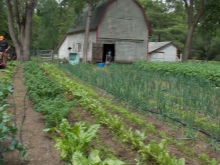
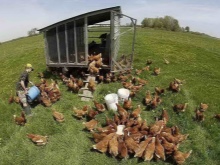
In accordance with the current legislation, maintaining your own subsidiary and summer cottage means:
- growing and processing of agricultural products;
- raising poultry;
- breeding of farm animals.
As for the type of permitted use, two types of land can be allotted for private household plots:
- areas of settlements;
- agricultural plots.
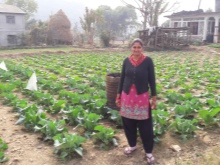
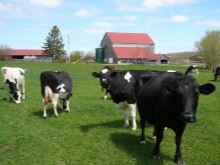
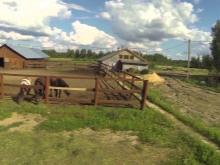
Depending on the type of intended purpose of private household plots, the type of farming may also differ significantly. So, the site on the allotments of settlements was called the backyard.
The allotment within the boundaries of agricultural allotments is designated as a field allotment.
In accordance with this, on a private household plots, the owner has the right to:
- build any residential buildings and utility rooms;
- to cultivate garden and vegetable garden plants;
- plant flowers;
- to breed livestock and poultry.

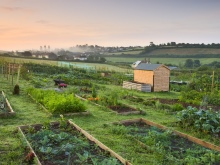
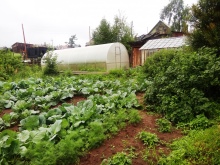
A field allotment of private household plots can be located strictly outside the village. This includes plots allocated to villagers for planting cereals and potatoes. The construction of any buildings on such land is prohibited.
A land plot for private household plots must be provided, acquired or rented.
If a land allotment is issued by municipal authorities, then the parameters of the minimum and maximum area of the allotment will be limited by the norms established in the region.
For example, in Vladimir, it is allowed to provide a plot ranging in size from 0.04 hectares to 0.15 hectares. In Cheboksary, these norms are slightly different - from 1200 to 1500 m2.
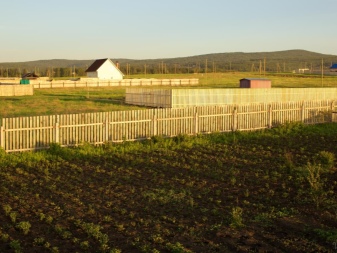
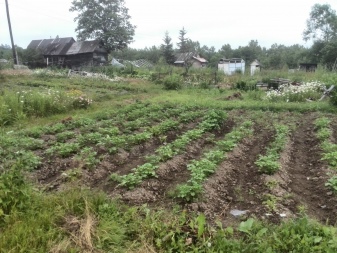
Comparison with the land IZHS
IZHS assumes a type of use of a land plot, in which its owner builds on this plot for himself and his family. At the same time, he must do this either on his own, or with the involvement of hired workers, but completely at his own expense. The building erected on the site for the IZhL is limited by law in terms of the number of floors - no more than three, as well as in terms of the composition of residents - within the same family. Both individual housing construction and private household plots are intended for non-commercial use, that is, running a farm on this does not imply making a profit. Nevertheless, there are very significant differences between such plots.
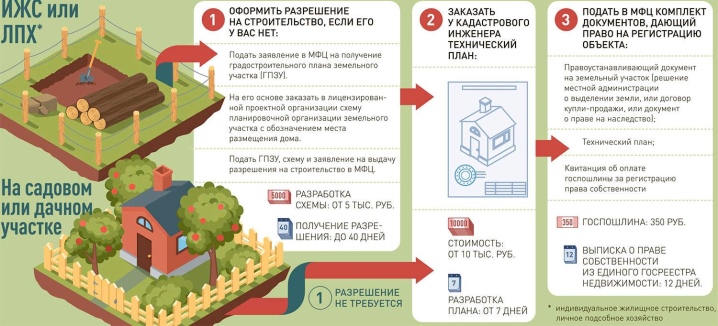
On the plots of individual housing construction, the construction of a residential building is allowed, it can be issued and registered on it. Within the limits of private household plots, a residential structure can be erected only if the land plot is located within the boundaries of the settlement, and registration in this place is allowed. The land tax on a plot for individual development is much higher than the tax on an agricultural plot. For household plots, this difference is not so noticeable, where the rate is either identical or has a minimal difference.
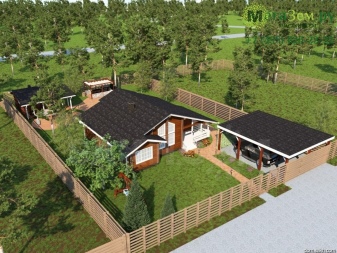
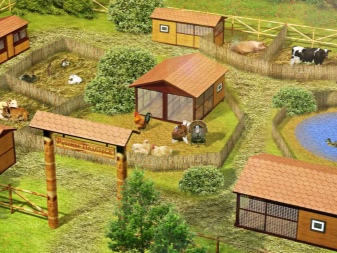
But a field land plot without a permit for construction will be much cheaper.
On the land under IZHS, it is allowed to plant garden and vegetable garden crops. On the plots allotted for the organization of private household plots, it is possible to carry out not only crop production, but also animal husbandry. The construction of a residential building on the land under the individual housing construction is attributed to the responsibility of the owner of the land - he must complete all work no later than 3 years after the registration of the allotment. Otherwise, the owner will be held administratively liable for the misuse of the land plot provided to him. The construction of buildings on site for private household plots is considered the right of the owner, but in no way his obligation.


The choice between land for private household plots and individual housing construction depends on a group of criteria.
- The basic purpose of the development of the site and the category of land. So, for the construction of a house, both individual housing construction and private household plots can be distinguished if the latter is located within the boundaries of settlements. Private household plots and individual housing plots are also allocated for plant growing, and only private household plots are allocated for animal husbandry.
- The possibility of laying engineering communications. If the municipality provides a plot for residential construction, then it undertakes to provide the owner of the plot with the basic infrastructure - electricity, water and gas supply, an asphalt road that is cleared during the winter months. Public transport stops, shops, schools and hospitals should be located nearby in accordance with the norms established by applicable law.
- The owner of an allotment of private household plots often finds himself in a situation where the burden of paying for engineering and technical support will fall on him. Municipal authorities do not undertake such a responsibility. Therefore, if there are no communications near the site, then the low price of such land can result in colossal costs for technical networks.
- Operating costs. With private household plots, these costs will be much less (in the event that there is no need for communications). For plots for individual housing construction, the cost of maintaining a building is much higher, especially in terms of payment for electricity and gas.


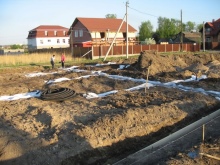
It should be noted that the Russian government encourages land owners to create their own private farms. Therefore, the owners of household and field private farms are entitled to some benefits and cash subsidies.
First of all, this concerns preferential taxation.

In addition, the municipality assumes the obligation, if necessary, to provide citizens with subsidies for:
- purchase of feed for agricultural livestock;
- purchase of new equipment;
- compensation for the costs of slaughtering livestock;
- procurement of fuel for agricultural machinery;
- purchases of mineral and organic fertilizers;
- veterinary service.
The procedure for payment of subsidies and their amount are established by each region individually.

What can you build?
On the land plot of an individual subsidiary farm, the construction of structures of the following types is allowed.
- Residential buildings intended for one family with no more than 3 floors, excluding basements and basements.
- Sheds, storerooms and other outbuildings for household purposes.
- Other structures for personal use (garden kitchen, bathhouse, etc.).
All constructed objects must meet the norms of town planning regulations, approved in each specific area. In addition, they require the approval of the municipality.

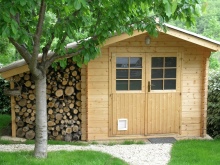
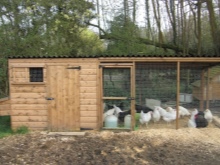
The exception applies only to structures built without a foundation - their owners of a land plot for private household plots can build them at their discretion.
On the plots of private household plots, a pigsty, a chicken coop, a cowshed and other structures designed for breeding livestock and poultry can be additionally erected. If necessary, the construction of a hairdressing salon or a dining room is allowed. However, in this case, permission must be obtained from the municipal land use commission.
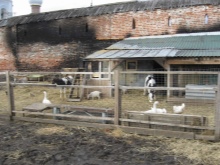
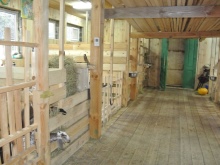
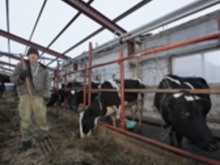
Requirements are imposed on all buildings.
- Any private development should be carried out taking into account the "red line" - that is, the border between the site and the neighboring land plot, without crossing common areas.
- Outbuildings must be located at a distance of at least 5 m from the street.
- The distance between individual buildings must comply with the current sanitary rules, namely: between the poultry house, cowshed and other buildings for livestock - at least 12 m; between the house and the well, toilet, septic tank or bath - at least 8 m.
- If there is no connection to the central sewerage on the site, the construction of a cesspool is allowed.
- No permission is required for any non-capital buildings. These include structures without a deep foundation, which, if necessary, can be easily disconnected from engineering communications networks, moved and disassembled. These include garages, sheds, animal housing, folding sheds and other ancillary structures.
- A mandatory permit from the municipality is required for the construction of residential buildings. If a capital construction was erected on a private farm site without permission, or if the house was built on a field-type private farm, then it is equivalent to misuse of the land and entails an administrative fine. It is from 0.5 to 1% of the cadastral value of the site, but at least 10 thousand rubles. If the cadastral value is not indicated, then the penalties will be from 10 to 20 thousand rubles.
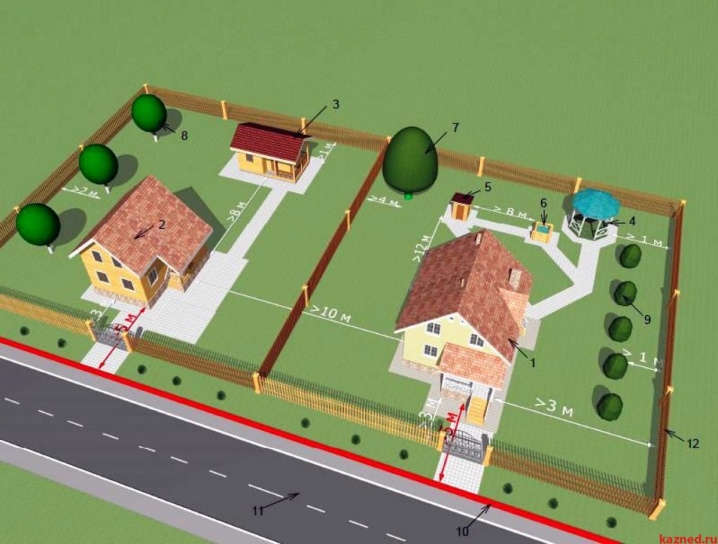
How to determine the category and type of permitted use?
The nature of the permitted use of the land plot and the type of land are usually indicated in the cadastral passport. As usual, all the necessary information is contained in clause 9. If this is a private household, then the entry "for maintaining private household plots" or "for agricultural purposes" is necessarily contained.
If this passport is not on hand, then the owner of the site has the opportunity to submit an official request for its issuance.

You can also clarify the type of permissible use of the site in other ways.
- Study the construction project for a specific region and settlement. It must contain the area provided and all types of conditionally possible uses.
- Alternatively, you can form a request to the municipality to provide basic data about a particular land plot. However, such a request can only be sent by the owner of the site.
- It happens that the allotment has two or more acceptable uses. In this case, its owner has the right to make a choice in favor of one or the other. In any case, each site can have only one VRI.
And in conclusion, let's dwell on the main pros and cons of private household plots.
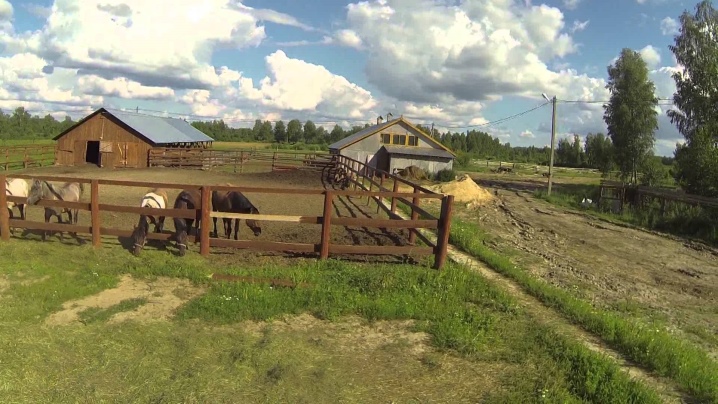
pros
- Running your own subsidiary farm does not apply to entrepreneurial activity, therefore it does not require an individual entrepreneur.
- If the area of the site is not higher than that established by the current legislation, and only members of one family work on it, then the income tax on the produced and sold agricultural products can be omitted.
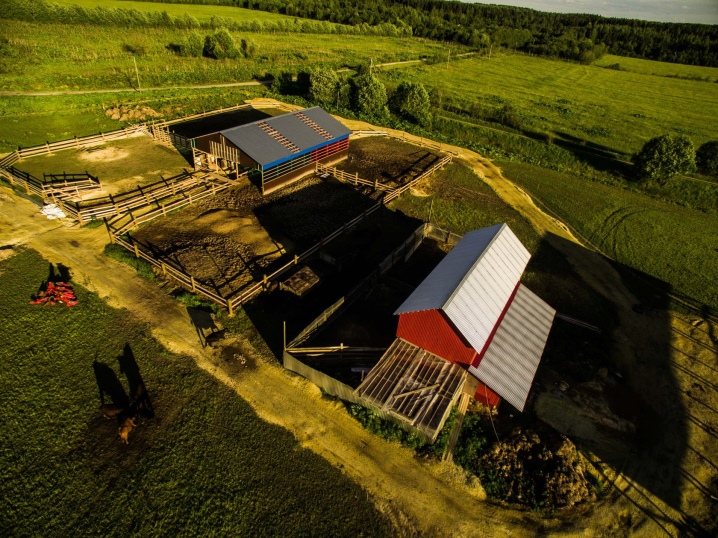
disadvantages
- A ban on the construction of residential buildings on the plot of private household plots outside the boundaries of the settlement.
- Allotment owners have to pay high taxes within the settlement.
Thus, the owner of the LPN site has to choose - either construction restrictions or impressive taxes.




































































The comment was sent successfully.